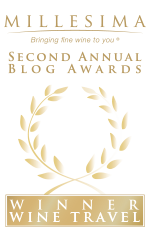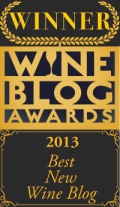If last week’s article on Cru Beaujolais piqued your interest, here’s my guide to the Crus, plus where to buy it and drink it in NYC.
Despite burgeoning quality, the Cru Beaujolais category remains relatively unknown to the general consumer, thus prices hang terrifically low. Skip the $11 Nouveau and other entry-level stuff. At twice the price, you get five times the complexity, structure, and balance, plus all the fruit, with Gamay grown in the granite and schist soils of the Crus.
Winemaking methods significantly affect flavors, and range from the region’s hallmark carbonic maceration (fermenting whole berries in closed tanks to produce a light, fruit-forward style) to Burgundian methods for more serious, structured wines (e.g., destemming the grapes). Interest in organic and biodynamic farming is growing, with a number of fine producers tipping into the natural winemaking category. As younger generations — and energized, historic families — pay closer attention to the attributes of their land and seek quality over quantity, Cru Beau will continue to be a category to watch.
The following list of villages includes expected characteristics in flavor and structure of the wines, with inevitable generalizations. Like anywhere, producer matters. Try to remember a handful of names (producer or region) or just ask your retailer or sommelier for assistance (find our three fave shops and restaurants, below).
The Ten Crus of Beaujolais
Brouilly Wines can vary greatly; it is the largest and most southerly of the Crus. Generally, expect soft and fruity wines with mineral notes. Producers: Georges Descombes, Domaine de Vissoux (Chermette), Jean-Claude Lapalu.
Chénas A small appellation, the wines are hard to find in the U.S. Known for red fruits, earthiness, and a heavier body/tannins. Sandwiched between Juliénas and Moulin-à-Vent. Producer: Domaine Piron-Lameloise.
Chiroubles The high altitude contributes great acidity to the wines, which can be tart in cool years, or fresh, perfumed, and bright in sunnier ones. Producers: Daniel Bouland, Damien Coquelet, Cret de Ruyere.
Côte de Brouilly Small appellation in Brouilly on the slopes of Mont Brouilly. Structured wines with strong mineral character, cherries, and firm tannins that allow it to age. Producers: Chateau Thivin, Terres Dorées (Jean-Paul Brun).
Fleurie Floral (think violets), rich, and round, some can be elegant and feminine, others more masculine. Prices higher than most. Producers: Sunier, Chateau de Fleurie (Barbet), Clos de la Roilette (Coudert), Potel-Aviron.
Juliénas Full-bodied, sturdy wines; sometimes rustic; can age. Flavors lean toward raspberries, cherries, and spice. Producers: Clos du Fief (Michel Tête), Pascal Granger.
Morgon Slightly less powerful than Moulin-à-Vent; mineral-laden wines come from the slopes of the Cote du Py. Known for a group of producers called the “Gang of Four,” protégés of natural wine pioneer Jules Chauvet: Jean-Paul Thevenet, Marcel Lapierre, Jean Foillard, and Guy Breton. Chamonard deserves to make it five.
Moulin-à-Vent Most powerful, tannic (for Gamay), and structured of the Crus, with classic fruitiness. Ages well. Producers: Jean-Paul Brun, Diochon and Domaine de Vissoux (Chermette).
Régnié The newest Cru, wines often have a soft, round, and spicy profile with light tannins. Generally drunk young to enjoy the strawberry and cherry notes. Producers: Charly Thévenet, Guy Breton, Descombes, Chateau de la Pierre (Barbet).
Saint-Amour Northern tip of Beaujolais with limestone soil similarities to southern Burgundy. Intense red fruits and florals with well-integrated tannins. Producers: Domaine des Billards (Barbet), Chateau des Rontets.
Where to Buy
When you’re ready to stock up on a few bottles or even a case of wine, you’ll find the investment in Cru Beau is minimal; the finest bottles fall predominantly around the low- to mid-twenties price range. Sadly, producers are hardly paid what the wines are worth (in fact many are struggling), but until (or if) the market corrects, it’s a buyer’s paradise.
Chambers Street Wines (148 Chambers Street, 212-227-1434) Owner David Lillie pointed out several selections: Roland Pignard, Tradition, Morgon, 2012 for $22: “Certified biodynamic, it’s a beautiful wine showing complex red and black fruits with saline minerality.” Chignard, “Les Moriers,” Fleurie, 2012 for $26: “from very low yields…it has gorgeous raspberry, wild-strawberry and violet aromas and a beautiful light- to medium-bodied palate with bracing acidity.”
Flatiron Wines (929 Broadway, 212-477-1315) The Cru Beau evangelists at Flatiron have a diverse array of bottles, like the elegant and earthy Michel Tete, Clos du Fief, Juliénas, 2011, showing savory beef bouillon and fruity cherry notes for $23, and Jean-Paul Brun’s bright, mineral-driven, raspberry-laced Domaine des Terres Dorées, Cote de Brouilly, 2012 for $22.
Astor Wine & Spirits (399 Lafayette Street, 212-674-7500) Cavernous and competitively priced, Astor carries a handful of options, including the dense, floral, cassis-imbued Clos de la Roilette, Fleurie, 2013 for $22, and the vibrant and taut, cherry-soaked Domaine Des Billards, Saint-Amour, 2011 for a mere $20. A no-brainer.
Where to Drink
Cru Beau is a growing darling of sommeliers citywide. Three wine directors who love the stuff weigh in on their favorites.
Partner and beverage director at Racines (94 Chambers Street, 212-227-3400), Arnaud Tronche particularly enjoys:
Chateau Thivin, Côte de Brouilly: The wine has amazing purity, minerality, plenty of fruit, and can age.
Marcel Lapierre, Morgon: Round, joyful with bright fruit; it’s a classic Morgon.
Guy Breton, Régnié: Earthy with dark fruits; dense, complex, and age-worthy. A minimal amount of sulfur is added.
Sommelier at Claudette (24 5th Avenue, 212-868-2424), Seth Liebman’s list includes at least one wine from all 10 Crus.
Chateau des Rontets, Saint-Amour, 2011: A pretty wine; very soft and beautiful with a nice center of character and structure. It is organic and “natural” in that they do not add any sulfur.
Joseph Chamonard, Le Clos de Lys, Morgon, 1997: The wines from this Chateau…are nothing short of heart-stopping. The 1997 vintage is terrific, though lean and focused with high acidity. It demands your attention.
Jean-Claude Lapalu, Croix Rameaux, Brouilly, 2012: Not to be confused with Lapierre, Lapalu makes wines with guts and strength; they are great drinking and deserve global attention.
Lelañea Fulton, wine director for the Dirty French (180 Ludlow Street, 212-254-3000)highlights:
Damien Coquelet, Vielles Vignes Chiroubles, 2012: The stepson of Georges Descombes, he makes a mean Chiroubles Vieilles Vignes.
Stephane Aviron, ‘Côte du Py, Vielles Vignes’ Morgon, 2011: An old-school vigneron, his Crus drink much like Burgundies.
Pascal Granger, ‘Grande Réserve,’ Julienas, 2009: Granger produces wines of deep dark fruit and amazing structure. They are powerhouse wines.











